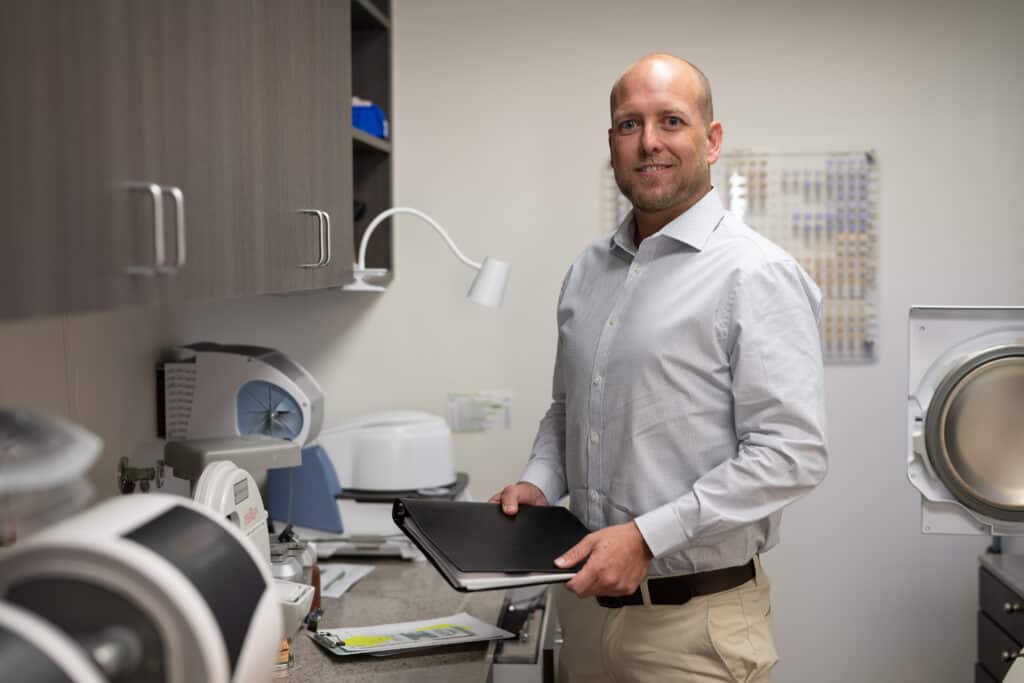10+ years
Focused on Practice Transactions
700+
Doctors Represented
60 day
Average Transaction Time
Find Out How a Practice Transitions Law Firm Can Help You with Your Professional Practice
10+ years
Focused on Practice Transactions
700+
Doctors Represented
60 day
Average Transaction Time
One Step Ahead
We believe that protection and growth for dentists, veterinarians, and health care professionals needs to be focused on at all stages of your career, so we work dreamers, start-ups, established practices, and those looking to slow down or get out.
We believe in simplicity. We are experts in our trade and try to avoid the billable hour because we believe that it misaligns the client’s and lawyer’s incentives.
So, we generally work on flat fees. Removing the mystery in billing creates a better working relationship for both of us. Pretty simple, right?
Feel free to reach out to us anytime, our phone consults are always free.
Protect your personal assets from creditors with a property formed dental corporation.
You dont need to go it alone. We can help you start your partnership on the right foot.
Setting up a Revocable Living Trust will help you to transfer your practice in the event of dissability or death.
A lease can be one of your practices biggests assets. Make sure you negotiate fair terms and know what you are signing.
Starting a new job or hiring. We help dentists on both sides memorialize their associate agreements as employees or IC’s.

“As your attorney, I strive to simplify the complex and create efficient ways to overcome obstacles. This allows my clients to protect what they have earned and grow their practices with peace of mind.”
-Attorney Matthew Odgers
three steps to success
We Will Help You Every Step Of The Way
You decide the scope of our services and where you would like our help.
01
Exploring your goals and learning your interests
02
Information gathering and Planning
03
Draft, Negotiate and
finalize documents
Whether you are a recent graduate or a seasoned practice owner looking forward to enjoying retirement, we’ve got you covered.
We are not generalists. We focus on working with Doctors and Practice Transactions.

Odgers Law Group offers tailored legal services to California doctors, focusing on practice transitions, entity formations, lease negotiations, and employment agreements. Our expertise includes guiding doctors through the complexities of buying, selling, or starting a practice.
Our services extend to drafting and reviewing contracts, ensuring compliance with healthcare laws, and providing counsel on employment matters. Odgers Law Group positions doctors for professional success with strategic legal solutions.
Odgers Law Group specializes in facilitating smooth practice transitions for healthcare professionals. Our services include legal guidance on practice sales, partnership formations, and associate buy-ins, ensuring compliance and protecting clients’ interests.
Our expertise extends to drafting and negotiating contracts, providing strategic planning, and advising on legal structures. Odgers Law Group’s support is crucial for a seamless transition, safeguarding the future of the practice.
Matthew Odgers, Esq., is a distinguished attorney with a focus on healthcare law. His expertise encompasses legal guidance for healthcare providers and compliance with industry regulations.
Odgers’ proficiency extends to business law, aiding organizations in navigating legal complexities. His counsel is sought after for both healthcare and corporate law matters.
Odgers Law Group offers comprehensive support for practice transitions, guiding healthcare professionals through the complexities of buying, selling, or merging practices. Our legal expertise ensures a smooth transition, addressing contracts, compliance, and negotiations.
With a focus on personalized service, Odgers Law Group tailors strategies to individual needs, ensuring clients are well-informed and confident throughout the transition process. Our dedicated team provides ongoing support, from initial planning to finalizing deals.
Yes, our team has extensive experience in mergers and acquisitions for medical, dental, and veterinary practices. We provide strategic advice and legal support to ensure a smooth merger or acquisition, with a focus on maximizing financial and operational outcomes.
We focus on creating the right deal rather than rushing into any deal. With our negotiation expertise and attention to detail, we prioritize long-term success for your practice and satisfaction for all parties involved.
Our primary focus is on the healthcare industry, including dental, medical and veterinary practices. We also provide services for related professional entities, ensuring compliance with California laws governing practice ownership and operations.
Contact us through our website or call to schedule a free consultation. We’ll discuss your specific needs, outline the process, and create a customized plan to help you achieve a smooth and successful transition.
Odgers Law Group is a distinguished firm that has established itself as a beacon for healthcare professionals in California. With a strong emphasis on guiding doctors through the intricate process of practice transitions, they bring unparalleled expertise to the table.
As lawyers specializing in the health care field, we recognize the significance of patient relationships and work diligently to safeguard them during practice changes.
Our deep understanding of the legal landscape equips Odgers Law Group with the skills to navigate negotiations effectively, securing deals that benefit all parties involved. Our approach goes beyond merely closing deals; it revolves around identifying and executing the right deals that not only endure over time but also adapt to changes in the healthcare industry.
The success of Odgers Law Group in facilitating practice transitions is evident in the results they deliver. By combining their legal acumen, financial insight, and unwavering dedication to client success, we have established ourselves as trusted partners for healthcare professionals seeking seamless and prosperous practice transitions in California.